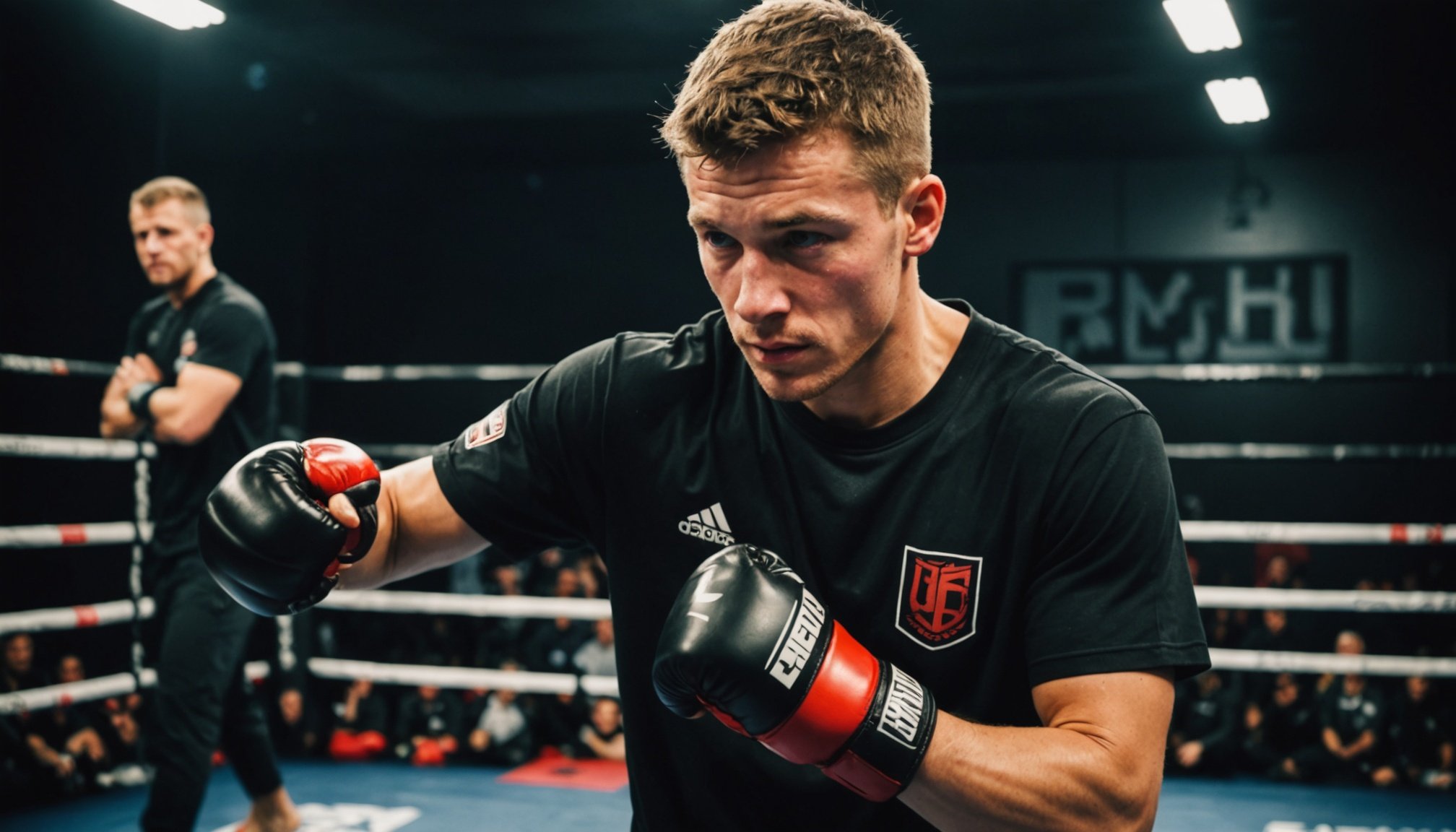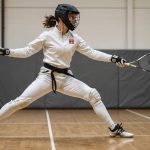Overview of Shadowboxing in Kickboxing
Shadowboxing is a pivotal training method in kickboxing, designed to enhance both offensive and defensive skills. By definition, it involves a fighter practicing techniques and movements alone, without an opponent, mimicking fight scenarios. The primary goal is to sharpen reflexes, improve footwork, and enhance overall strategic movement in the ring.
In kickboxing, shadowboxing serves the dual purpose of reinforcing techniques while significantly boosting **. Focusing on defensive skill enhancement, it allows fighters to imagine attacks from an opponent and prepare counterstrategies. By practicing evasion and counter-attacks, athletes benefit from improved reaction times and situational awareness.
Also to see : Optimizing Training for UK Female Kickboxers: Tailored Strategies Aligned with Menstrual Health
Historically, shadowboxing has deep roots in combat sports, dating back to ancient martial arts traditions. It has been adopted across various fighting disciplines due to its effectiveness in building core skills without the risk of injury. Not only does it cultivate self-discipline and a connection between mind and body, but it also provides a safe environment to experiment with new techniques.
Ultimately, whenever a fighter engages in shadowboxing, they embark on a mental and physical journey, envisioning a personalized combat scenario. This process enhances critical defensive capabilities, ensuring they are well-prepared for real-world confrontations in the ring.
In parallel : Enhancing fencing excellence: how biomechanical analysis transforms techniques for uk athletes
Advanced Shadowboxing Techniques for Defense
Shadowboxing is a vital component of boxing training, especially when focusing on defensive strategies. To elevate your skills, incorporating advanced techniques and drills can be instrumental in honing defense mechanisms.
Begin with shadowboxing drills designed explicitly for defensive mastery. These drills often combine head movement and agile footwork to simulate real bouts. A popular drill involves a sequence of slips, ducks, and rolls, which trains your body to instinctively react to incoming punches. By refining these movements, you enhance your ability to evade strikes during actual matches.
It’s crucial to integrate advanced footwork and head movement techniques into your shadowboxing routine. Practicing intricate patterns like the step-pivot or side shuffle sharpens your ability to maneuver in and out of the opponent’s reach. Introducing fluid head movements—such as bobbing and weaving—can further complicate an adversary’s aim, making you a challenging target.
Visualization plays a significant role in these drills. Envision a relentless opponent advancing, requiring you to defend dynamically and unpredictably. Such mental engagement during shadowboxing not only boosts defensive reflexes but also fortifies your mental resilience.
By embedding these advanced techniques in your shadowboxing practice, you develop a formidable defense ready for any opponent.
Innovative Drills to Enhance Defensive Skills
Exploring innovative drills is an effective way to sharpen your defensive skills. These structured training exercises not only build technique but also enhance reaction time and precision.
Drill 1: Slip and Counter
Begin by engaging with a partner or shadowboxing. Focus on slipping: swiftly moving your head to make punches miss. Once evading, immediately counter with a punch of your own. This drill not only teaches evasion but also quick retaliation. Perfecting this technique enhances both reflexes and timing, allowing you to stay a step ahead in the ring.
Drill 2: Bob and Weave
This classic drill involves moving under punches, requiring constant motion and focus. Picture yourself ducking opponents’ hooks; this simulates the real dynamic of fights. Incorporating bob and weave into your routine improves agility and helps solidify muscle memory for evasive maneuvers, thus providing a strategic edge.
Drill 3: Parry and Return
To perform this drill, practice deflecting strikes with your open palm and follow up by launching your own attack. The goal is to disrupt your opponent’s rhythm while positioning for a decisive counter. Implementing this in training exercises strengthens defence against direct punches, honing quick precision tactics.
Regularly integrating these drills into your training will efficiently elevate your defensive skills.
Demonstrations and Practical Applications
Understanding the role of video demonstrations in mastering advanced kickboxing techniques is essential. These visuals provide learners with concrete examples, making complex movements easier to grasp. They serve as an invaluable tool for athletes aiming to refine their skills and engage with practical applications more effectively.
UK kickboxers, for instance, frequently leverage shadowboxing as a primary exercise in their training sessions. Shadowboxing allows practitioners to focus on form and perfection of techniques without physical resistance, making it a versatile component of their routine. By analysing video demonstrations of shadowboxing, athletes can identify areas for improvement and optimize their performance in a controlled environment.
Moreover, feedback from experienced kickboxers highlights the transformative power of these training methods. Testimonials frequently underscore how video-based learning and real-life demonstrations have allowed them to achieve new levels of proficiency. Kickboxers often describe these techniques as foundational, enabling them to adapt quickly to dynamic competition scenarios.
In conclusion, incorporating video demonstrations and practical applications like shadowboxing into training sessions enriches the learning process. They bridge the gap between theoretical knowledge and real-world execution, proving to be an indispensable resource in the sports community. Aspiring kickboxers are encouraged to make use of these powerful tools to enhance their technique and competitive edge.
Benefits of Shadowboxing in Fight Preparation
Shadowboxing serves as an invaluable tool in fight preparation, enhancing both physical and psychological aspects. On a physical level, shadowboxing significantly contributes to improving endurance and agility. It enables fighters to practice movements without the physical strain of sparring, thus allowing for longer training sessions. This practice sharpens footwork and speeds up reaction times, crucial for a competitive edge.
In terms of psychological advantages, shadowboxing aids in honing mental focus and developing effective fight strategies. By visualising opponents and scenarios, fighters can simulate real-life situations, preparing their minds for actual confrontations. This mental rehearsal fosters a strategic mindset, vital for anticipating an opponent’s next move.
Furthermore, the continuous practice of shadowboxing ensures that skills and techniques are polished, directly impacting overall performance during competitions. A fighter who dedicates time to shadowboxing tends to exhibit confidence and precision in the ring. This practice not only boosts technical prowess but also builds the mental toughness required to handle the pressures of competitive fighting.
In essence, shadowboxing provides a holistic approach to fight preparation, integrating physical training with strategic planning, thereby fostering comprehensive performance enhancement.
Expert Opinions on Shadowboxing Techniques
Shadowboxing is a fundamental training tool in kickboxing, offering diverse benefits as expressed by various kickboxing coaches. According to several expert opinions, shadowboxing serves as the perfect medium for honing agility and precision. It’s an adaptable technique that mirrors real fight scenarios, allowing practitioners to refine their movements without the constraints of a sparring partner.
Experienced UK kickboxing coaches highlight the strategic depth shadowboxing provides. It’s not just about punching the air; it’s about visualising opponents and crafting a reactive style tailored to different fighters. These experts often recommend shadowboxing as a mental exercise, enhancing focus and adaptability.
Training insights from professional coaches reveal distinct approaches to shadowboxing across fighting styles. For example, a defensive fighter may focus on dodging and counterattacking, while an aggressive style might emphasise relentless, high-intensity movement.
Future trends in shadowboxing are evolving, showcasing innovations such as integrating technology for enhanced feedback. With advancements like wearable sensors that track movement precision, UK kickboxing is set to embrace a new era where traditional techniques merge with technological prowess. These expert opinions reflect a shared belief: shadowboxing remains an invaluable, evolving tool for today’s kickboxers.





